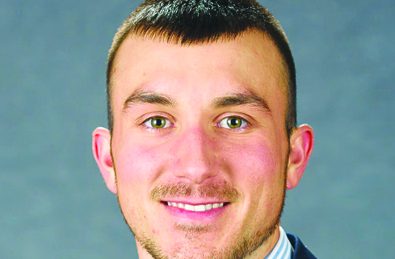Limiting weaning stress for beef cattle
Published 5:41 pm Tuesday, September 5, 2017

- Clay Stamm is the Clark County Cooperative Extension Service agent for agriculture and natural resources.
Weaning is usually a stressful time of year for calves. Limiting weaning stress in beef calves can increase their daily gain. Calves often experience four types of stress: physical, environmental, nutritional and social. You can help them avoid or minimize these with proper management.
Physical stress usually happens during long periods of standing in working facilities, mishandling in the working chute and hauling to a weaning facility. Castration and dehorning during weaning can significantly increase stress, so castrating at birth and vaccinating before weaning will help decrease this type of stress.
Environmental stress can be man-made or a product of the climate. The weaning pen is the main human-induced factor in this type of stress. When you transfer calves from a clean pasture to a dry lot, it can add stress as they are not familiar with the new surroundings. Plus, moving calves to dusty dry lot, where they walk around in a confined space turning up dust, can cause respiratory problems and decreased weight gain. Climate issues such as rain, ice, snow and wind are out of your control, but you can try to plan weaning time to avoid those conditions.
Trending
Social stress is usually caused by removing the calf from its mother. While this is an inevitable part of weaning, you can decrease the stress by using a cross-fence method. The cross-fence method is where you separate the calves from the mothers with a good fence that will keep them apart, but allow them to be nose-to-nose. This will keep the calves calmer and separation won’t be such a large issue. Even with more distance, as long as the calves can see the cows, it will reduce stress levels.
Nutritional stress happens when calves are transitioned from a milk and pasture diet to a stored forage and grain diet. You should have high-quality pasture available to calves during weaning time in the spring and the fall. For fall weaning, calves can graze fields cut for hay that are beginning to regrow or stockpiled fescue fields. Fall weaning pastures should be grazed or clipped between mid-August to mid-September to allow enough time for regrowth. We recommend turning calves into the pasture when grasses are 8 to 12 inches tall and letting them graze until grasses are 3 to 4 inches tall.
Pasture weaning really does offer a lower stress alternative to the conventional dry lot weaning programs. It reduces the environmental and nutritional stress simultaneously because calves are already used to pasture and their diet doesn’t drastically change. To have success with this method, it will take planning on your part regarding high-quality, available pastures.
For more information about weaning beef cattle, call the Clark County Cooperative Extension Service at 744-4682.
Source: Jeff Lehmkuhler, UK beef cattle specialist Clay Stamm is the Clark County Cooperative Extension Service Agent for Agriculture and Natural Resources.




